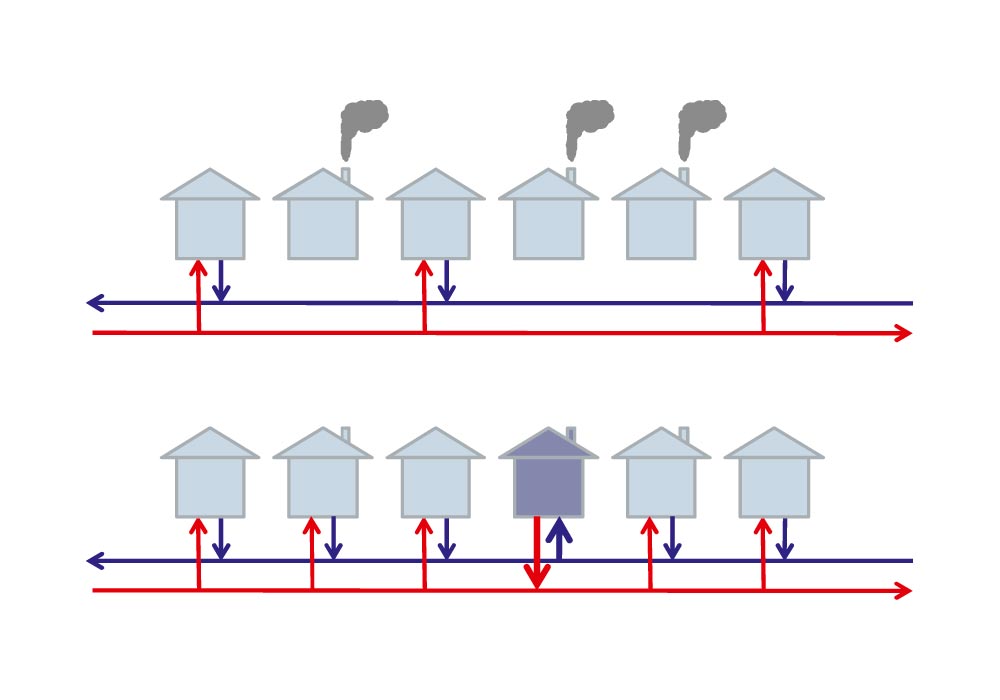As part of a project headed by AEE NÖ-Wien, technical and economic aspects of integrating local heat suppliers (solar collector systems, biomass power plants and sources of waste heat) into district heating networks were investigated. The project consortium included the Institute of Chemical Engineering at Vienna University of Technology, the Austrian Biomass Association, BIOENERGY 2020+, the engineering consultants Leo Riebenbauer GmbH and the firms of S.O.L.I.D. GmbH and Pink GmbH.
The technical prerequisites for supplying heat to grids locally were worked out, while system simulations and costing calculations were carried out and possible business cases were discussed. Special attention was paid to scenarios in which consumers turn into prosumers.
Feeding return flow into the supply was identified as a suitable technical approach. Here a heat transfer medium is taken from the return flow and pumped through the prosumer heat exchanger. In this case the pump must overcome the pressure difference between supply and return flow in the district heating network. The system operators prefer this approach, as return flow temperatures stay constant and the prosumer bears the bulk of the cost of pumping. However, the method makes sense only if the pumping energy required by the prosumer is significantly less than the amount of heat transferred. The hydronic situation was investigated for the district heating network in Bruck an der Mur, where it turned out that very little electric power is needed in comparison with the amount of heat fed in. The analysis also revealed that as additional prosumers are tied in the temperature situation in the grid may improve.
The simulation and the comparison between various different scenarios revealed that local infeeding can be of economic benefit to the overall system. In the short term grid extensions will provide the most attractive settings for tying local suppliers in. For supplying heat from local solar collector units, micro-grids are a low-cost, flexible alternative to classical district heating networks.
